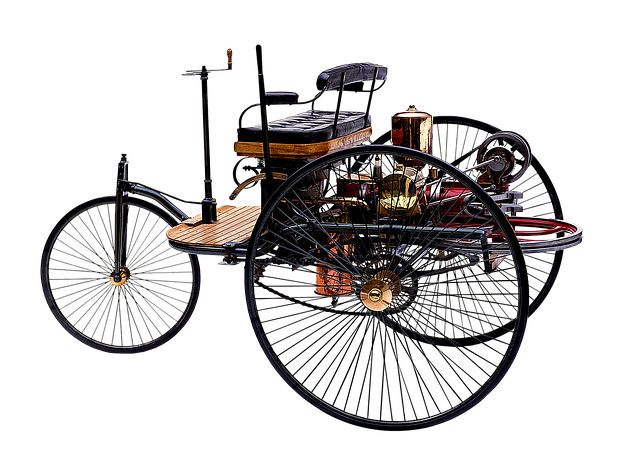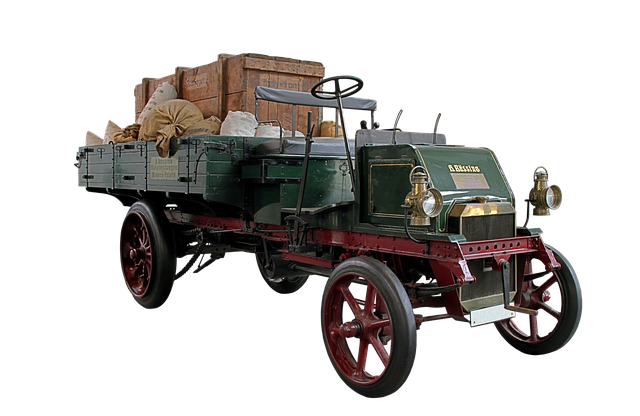Looking to register your car in California? This comprehensive guide breaks down the process step-by-step. From understanding key requirements to gathering essential documents, you’ll learn how to ensure a smooth experience at the DMV. A crucial aspect is verifying your Vehicle Identification Number (VIN), a process that’s simple yet essential. We’ll walk you through completing the application and making the necessary payments. By the end, you’ll have your California registration documents in hand, legally registering your vehicle with ease.
- Understand California Car Registration Requirements
- Gather Necessary Documents for DMV Visit
- Perform Vehicle Identification Number (VIN) Verification
- Complete Application and Payment Process at DMV
- Receive Your California Registration Documents
Understand California Car Registration Requirements

Before registering your car in California, it’s crucial to understand the state’s specific requirements. The California Department of Motor Vehicles (DMV) mandates several key steps for car registration, including a thorough vehicle inspection and verification of the Vehicle Identification Number (VIN). This process ensures that all cars on California roads meet safety and environmental standards.
One essential component of the registration process is the DMV VIN verification, which involves checking the authenticity of your vehicle’s VIN through official channels. You can facilitate this step with a mobile vin verifier or conduct a vin inspection yourself to ensure compliance before proceeding with registration.
Gather Necessary Documents for DMV Visit

Before heading to the DMV, ensure you gather all essential documents to make your car registration process smooth and efficient. This includes your vehicle’s title, which proves ownership; a valid driver’s license or identification card; and proof of insurance, typically in the form of an insurance card or policy number. Additionally, the DMV requires a completed Vehicle Registration Application, which can be obtained from their website or picked up at any DMV field office.
One crucial step is to undergo a DMV vin verification process, where you’ll need your vehicle identification number (VIN) ready. This can be done through a mobile VIN inspection service for added convenience, allowing you to verify your car’s history and ensure all documentation is in order before arriving at the DMV. Having these documents prepared will not only save time but also help avoid any potential delays during registration.
Perform Vehicle Identification Number (VIN) Verification

Before you begin the registration process, it’s crucial to ensure that your vehicle’s Vehicle Identification Number (VIN) is legitimate and matches the make, model, and year listed on all associated documents. This step is often overlooked but plays a vital role in preventing fraud and ensuring accurate record-keeping. You can perform this dmv vin verification through various methods, including online tools or by reaching out to trusted professionals who offer mobile vin inspection services.
A reliable way to verify your VIN is by checking it against official databases using an internet connection or a smartphone application. Alternatively, some companies specialize in providing accurate and swift vin inspection services, especially if you require a quick turn-around time for your car registration. These professionals can conduct a mobile vin verification right at your convenience, saving you the hassle of visiting a DMV office.
Complete Application and Payment Process at DMV

To complete the registration process for your car in California, you’ll need to visit a DMV (Department of Motor Vehicles) office or utilize their online services. Start by filling out Form DV-140, which is the Application for Title and Registration. This form requires detailed information about your vehicle, including its make, model, year, and unique VIN (Vehicle Identification Number). Accurate VIN entry is crucial, as the DMV will conduct a dmv vin verification to ensure the vehicle’s authenticity.
Once your application is complete, you’ll need to make the necessary payments. California charges a fee for registration, which may vary based on vehicle type and emissions status. You can typically pay by cash, check, or credit card. For a more convenient option, consider using their mobile services, allowing for a mobile vin verification and payment submission from the comfort of your home. Alternatively, schedule a vin inspection at a DMV office to ensure your vehicle meets all legal standards before finalizing the registration.
Receive Your California Registration Documents

After submitting your application for vehicle registration at the California Department of Motor Vehicles (DMV), you’ll receive important documents that confirm your car’s registration status and compliance with state regulations. Among these, the most crucial is the Vehicle Registration Certificate, which includes vital information about your vehicle, such as its make, model, year, and unique Vehicle Identification Number (VIN).
The VIN plays a central role in the registration process, particularly during the dmv vin verification stage. This verification ensures that your car’s details match those on record and aids in preventing fraud. For added convenience, many residents opt for a mobile vin inspection or use a mobile vin verifier to streamline this aspect of registration, saving them a trip to a DMV office.
Registering a car in California involves understanding state requirements, gathering essential documents, and completing a straightforward process at the Department of Motor Vehicles (DMV). After performing a DMV VIN verification and ensuring all paperwork is in order, you’ll receive your California registration documents, officially making your vehicle a part of the Golden State’s road network.



